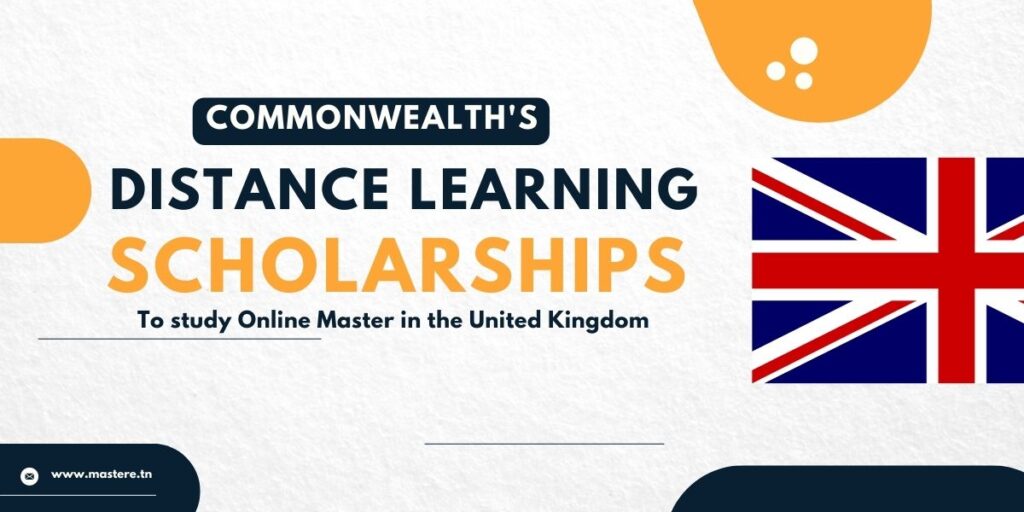I remember a time, not so long ago, when the idea of a university degree felt like a distant dream, a shimmering mirage on the horizon of my aspirations. My heart yearned for knowledge, for the kind of intellectual growth that only higher education could provide, but my wallet sang a mournful tune. The traditional path, with its towering tuition fees and the necessity of relocating, seemed utterly impossible. I worked a modest job, saving what little I could, but it was clear that even a decade of scrimping wouldn’t be enough to cover the costs of a conventional degree. That’s when I first heard whispers of distance learning – the notion that I could study from anywhere, perhaps even from my own cramped little apartment, without uprooting my entire life. It sounded too good to be true, a utopian vision of education democratized.
But even as the initial excitement bubbled up, a new wave of apprehension washed over me. Online education, while offering unparalleled flexibility, wasn’t free. The digital classroom, just like its brick-and-mortar counterpart, came with a price tag. My initial enthusiasm began to wane, replaced by the familiar pang of financial despair. Was this just another mirage, another path to an education that was still beyond my reach? I confided in a friend, lamenting my situation, convinced that I was stuck. She, with a wisdom beyond her years, simply looked at me and said, "Have you looked into scholarships for distance learning? They exist, you know."
Her words were a tiny spark in the darkness. Scholarships? For online degrees? It hadn’t even crossed my mind. My preconceived notion was that scholarships were reserved for the brightest stars heading to ivy-clad campuses, or for athletes whose prowess could fill stadiums. The idea that someone like me, a hopeful but financially constrained individual pursuing an online path, could qualify seemed audacious. Yet, her simple question was enough to ignite a flicker of hope, prompting me to dive headfirst into the vast, sometimes bewildering, ocean of information that is the internet. This wasn’t just about finding money; it was about finding a way to transform that distant dream into a tangible reality.
My journey began with a dizzying array of search terms: "online degree scholarships," "remote learning financial aid," "distance education grants." The initial results were overwhelming, a chaotic mix of legitimate opportunities and dubious offers. It felt like trying to find a specific seashell on a crowded beach. I quickly learned that patience and a methodical approach were my best allies. My first major lesson was this: scholarships for distance learning are very much real, and they come in many shapes and sizes, just like those for traditional programs. The key was knowing where to look and, more importantly, understanding what each opportunity was looking for in a candidate.
I started by focusing on the institutions themselves. Many universities, especially those with robust online programs, offer their own dedicated scholarships for distance learners. It made sense – they want to attract talented students, regardless of their physical location. I spent countless hours poring over university websites, navigating through labyrinthine menus to find the "financial aid" or "scholarships" section specifically for online students. Sometimes it was explicitly stated; other times, I had to dig a little deeper, sending emails to admissions counselors or financial aid officers, asking direct questions. "Do you offer scholarships specifically for your online Bachelor of Arts in ?" I learned that a polite, well-articulated inquiry could often yield invaluable information.
Beyond individual universities, I discovered a whole ecosystem of dedicated scholarship platforms. These were like grand digital libraries, housing thousands of opportunities from various organizations, foundations, and even private donors. Websites like became my daily haunts. I would set up profiles, meticulously detailing my academic background, my aspirations, and my unique circumstances. These platforms had filters, allowing me to narrow down the search by degree level, field of study, country of origin, and yes, crucially, by "online program" or "distance learning." This was where the sheer volume of opportunities began to truly reveal itself, transforming that overwhelming chaos into manageable chunks.
It wasn’t just the big names that offered help. I soon realized that a significant number of scholarships came from professional associations related to my chosen field. For instance, if I were studying computer science, there would be tech associations offering scholarships to foster new talent. If it were nursing, nursing associations would have programs. These organizations are often deeply invested in nurturing the next generation of professionals, and they see online learning as a vital pathway to achieving that goal. I also found opportunities through charitable foundations, corporate sponsorships looking to invest in future employees, and even small, local community groups that simply wanted to support education in any form. The trick was to think broadly, to consider all the different groups that might have an interest in my success.
Understanding the types of scholarships available was another crucial step in my journey. It wasn’t a one-size-fits-all situation. There were, broadly speaking, two main categories: merit-based and need-based. Merit scholarships rewarded academic excellence, leadership skills, volunteer work, or specific talents. My grades, while decent, weren’t stellar, so I focused on showcasing my passion, my extracurricular involvement, and how my unique experiences outside the classroom had shaped me. Need-based scholarships, on the other hand, considered my financial situation. These often required detailed documentation of income, assets, and expenses, painting a clear picture of why I genuinely needed the financial assistance. I learned that many scholarships were a blend of both, seeking well-rounded individuals who also demonstrated a clear financial need.
Then there were scholarships tailored to specific demographics or fields of study. Scholarships for women in STEM, for first-generation college students, for individuals from specific geographic regions, or for those pursuing particular vocations like teaching or healthcare. I even stumbled upon scholarships for students who demonstrated exceptional resilience in overcoming personal challenges. This made me realize that my unique story, my personal struggles and triumphs, could actually be an asset. It wasn’t just about grades; it was about who I was and what I had overcome to pursue my educational goals. This realization was incredibly empowering.
The application process itself was an odyssey. Each scholarship had its own set of requirements, its own intricate dance of forms, essays, recommendations, and transcripts. It felt like assembling a complex puzzle, piece by meticulous piece. The essay, in particular, became my canvas. This wasn’t just an exercise in writing; it was an opportunity to tell my story, to articulate my passion, to connect my aspirations with the mission of the scholarship provider. I learned not to simply list my achievements, but to weave them into a narrative, explaining why I chose distance learning, how this specific degree would help me achieve my goals, and what impact I hoped to make with my education. I aimed for authenticity, for a voice that was undeniably mine, hoping it would cut through the stack of applications.
Securing strong letters of recommendation was another art form. I approached former professors, supervisors from my volunteer work, and even a mentor from a community project, people who knew me well and could genuinely speak to my character, work ethic, and potential. I didn’t just ask them for a letter; I provided them with a clear overview of the scholarship I was applying for, its mission, and what aspects of my character or achievements I hoped they would highlight. This made their job easier and ensured the recommendation was tailored and impactful. And those dreaded deadlines? They were non-negotiable. I created a meticulous spreadsheet, tracking every application, every requirement, and every submission date. Missing a deadline, I quickly learned, meant instant disqualification, no matter how brilliant my application might have been.
My biggest takeaway from this intense application phase was the importance of thoroughness and tailoring. A generic application, one that could be sent to twenty different scholarships without alteration, rarely succeeded. Each application had to feel personal, as if I had written it specifically for that one scholarship committee. This meant dissecting the scholarship’s mission statement, understanding its values, and then carefully crafting my essay and even tweaking my resume to highlight how I aligned with their goals. It was time-consuming, yes, but it dramatically increased my chances. I proofread everything, not just once, but multiple times, often asking a trusted friend to cast an extra pair of eyes over my essays, catching grammatical errors or awkward phrasing that I, blinded by familiarity, might have missed. A small typo, I learned, could unfortunately undermine an otherwise strong application.
There were moments of immense frustration, I won’t lie. Rejection letters arrived, some polite, others curt. Each one stung a little, a reminder of the competitive nature of these opportunities. There were days I wanted to give up, to just resign myself to the fact that perhaps this wasn’t meant for me. But then I’d remember that initial spark, that conversation with my friend, and the sheer desire for knowledge would propel me forward. Persistence, I discovered, wasn’t just a virtue; it was a necessity. Every rejection was a lesson, an opportunity to refine my approach, to understand better what scholarship committees were looking for. I started keeping a journal of my applications, noting what worked, what didn’t, and what questions I still had.
Finally, after months of relentless effort, the email arrived. It wasn’t a rejection; it was an acceptance. A full scholarship for my online degree program. I remember reading the words, then rereading them, my heart pounding in my chest. The relief was immense, a tidal wave washing away months of anxiety and self-doubt. It wasn’t just financial aid; it was validation. It was proof that my hard work, my dedication, and my belief in the power of online education had paid off. That distant dream had finally materialized, not through a stroke of luck, but through sheer grit and a systematic approach to finding and applying for these incredible opportunities.
Life as a scholarship recipient wasn’t entirely a walk in the park. The scholarship came with responsibilities: maintaining a certain GPA, sometimes participating in mentorship programs or community service. But these weren’t burdens; they were extensions of the opportunity itself, ways to give back and to further develop myself. Balancing online studies with my existing job and personal life required discipline, time management, and a deep understanding of my own learning style. The flexibility of distance learning was a double-edged sword; it offered freedom, but also demanded self-motivation. I learned to structure my days, to set realistic goals, and to leverage the digital tools and resources provided by my university.
My journey is just one story, of course. Your path to securing a distance learning scholarship might look entirely different, but the core principles remain the same. Believe in your ability to achieve your educational goals, regardless of financial barriers. Know that there are countless organizations and institutions out there dedicated to making education accessible. Be tenacious in your search, meticulous in your applications, and resilient in the face of setbacks. Tell your story with honesty and passion, letting your unique voice shine through. Distance learning scholarships are not mythical beasts; they are real, tangible opportunities waiting for determined individuals like you. They were the bridge that carried me from a place of yearning to a future filled with knowledge and new possibilities, and I truly believe they can do the same for you. The journey might be challenging, but the destination – an affordable, high-quality education – is profoundly worth every step.



